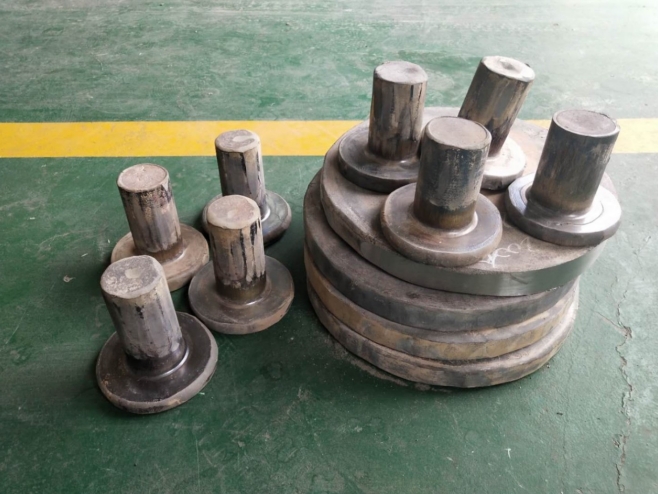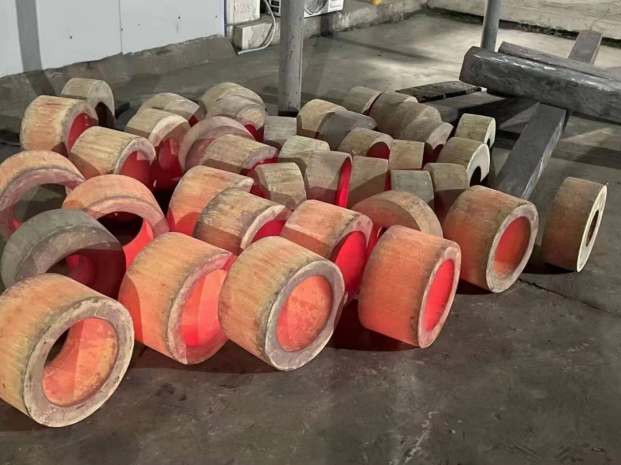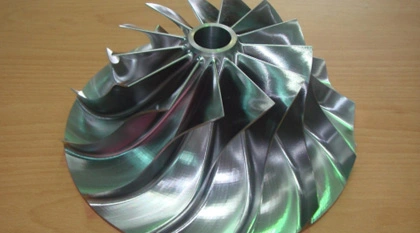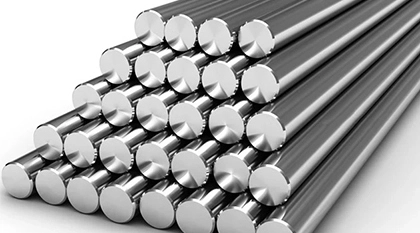Thank you for your
attention on Yesheng !
The Impact of Forging on the Metal Structure, Properties, and Defects of Forgings
The Impact of Forging on Metal Structure and Properties
In forging production, it is necessary to ensure not only that the forging meets the required shape and dimensions, but also that it satisfies the performance requirements demanded by the parts during use. These requirements mainly include strength indicators, plasticity indicators, impact toughness, fatigue strength, initial fracture toughness, and stress corrosion resistance. For parts that operate at high temperatures, properties such as high-temperature instantaneous tensile strength, long-term performance, creep resistance, and thermal fatigue performance are also crucial.
The raw materials used for forging include ingots, rolled materials, extruded materials, and forging blanks. Rolled materials, extruded materials, and forging blanks are semi-finished products formed from ingots through rolling, extrusion, and forging. In forging production, the adoption of reasonable processes and parameters can improve the structure and properties of the raw materials in the following ways:
(1)Breaking down columnar crystals, improving macroscopic segregation, transforming the cast structure into a forged structure, and welding internal pores under appropriate temperature and stress conditions, thereby increasing material density.
(2)Forming a fibrous structure in the ingot through forging, and further refining the fibrous direction distribution through rolling, extrusion, and die forging.
(3)Controlling the size and uniformity of grains.
(4)Improving the distribution of the second phase (e.g., alloy carbides in ledeburite steel).
(5)Enhancing the structure through work hardening or other forms of strengthening.
These improvements in structure lead to enhanced plasticity, impact toughness, fatigue strength, and long-term performance of the forgings. The final heat treatment of the parts then achieves the desired combination of hardness, strength, and plasticity, meeting the comprehensive performance requirements.
However, if the quality of the raw materials is poor or the forging process is inappropriate, forging defects may occur, including surface defects, internal defects, or failure to meet performance standards.

The Impact of Raw Materials on Forging Quality
High-quality raw materials are a prerequisite for ensuring the quality of forgings. If raw materials have defects, they will affect the forging process and the final quality of the forgings.
For instance, if the chemical elements in the raw materials exceed specified limits or if there is an excessive amount of impurity elements, it can significantly impact the forming and quality of the forgings. Elements such as sulfur (S), boron (B), copper (Cu), and tin (Sn) tend to form low-melting phases, which can cause hot brittleness in the forgings. To achieve fine-grained steel, the residual aluminum content in the steel must be controlled within a certain range, such as 0.02%–0.04% (by mass). If the aluminum content is too low, it fails to control grain growth, often resulting in unsatisfactory intrinsic grain size in the forgings. If the aluminum content is too high, it can lead to wood-like or tear-like fractures during pressure processing under conditions that form a fibrous structure. Similarly, in austenitic stainless steel, the more nitrogen (N), silicon (Si), aluminum (Al), and molybdenum (Mo) present, the more ferrite phase is formed, making the material prone to forming banded cracks during forging and imparting magnetic properties to the part.
If raw materials contain residual pipe shrinkage, subcutaneous blisters, severe carbide segregation, or coarse non-metallic inclusions (slag), forging may result in cracks. Defects such as dendritic crystals, severe porosity, non-metallic inclusions, white spots, oxide films, segregation bands, and mixed-in foreign metals in the raw materials can lead to decreased performance in forgings. Surface defects like cracks, folds, scars, and coarse-grain rings on the raw materials can cause surface cracks in the forgings.

The Impact of the Forging Process on Forging Quality
The forging process typically includes the following steps: cutting, heating, forming, post-forging cooling, pickling, and post-forging heat treatment. If the process is improper, a series of forging defects may occur.
The heating process involves furnace loading temperature, heating temperature, heating speed, holding time, and furnace atmosphere composition. Improper heating, such as excessive temperature or prolonged heating time, can cause defects like decarburization, overheating, or overburning.
For materials with large cross-sectional dimensions, poor thermal conductivity, and low plasticity, if the heating speed is too fast or the holding time is too short, it can lead to uneven temperature distribution, resulting in thermal stress and causing the forging stock to crack.
The forging forming process includes deformation methods, deformation degree, deformation temperature, deformation speed, stress state, condition of the tooling, and lubrication conditions. If the forming process is inappropriate, it can lead to defects such as coarse grains, uneven grain size, various cracks, folds, transverse flow, eddy flow, and residual cast structure.
During post-forging cooling, improper processes can cause defects such as cooling cracks, white spots, and networked carbides.

The Impact of Forging Structure on the Structure and Properties After Final Heat Treatment
For materials without polymorphic transformations during heating and cooling, such as austenitic and ferritic heat-resistant stainless steel, high-temperature alloys, aluminum alloys, magnesium alloys, and some copper alloys and titanium alloys, the structural defects formed during forging cannot be improved by heat treatment.
For materials that undergo polymorphic transformations during heating and cooling, such as structural steel and martensitic stainless steel, certain structural defects caused by improper forging processes or residual defects in the raw materials can significantly affect the quality of the forgings after heat treatment. Here are some examples:
(1)Some structural defects in forgings can be improved during post-forging heat treatment, and satisfactory structure and properties can still be obtained after final heat treatment. For example, coarse grains and Widmanstätten structures in generally overheated structural steel forgings, and slight networked carbides caused by improper cooling in hypereutectoid steel and bearing steel.
(2)Some structural defects in forgings are difficult to eliminate with normal heat treatment and require high-temperature normalizing, repeated normalizing, low-temperature decomposition, high-temperature diffusion annealing, and other measures to improve.
(3)Some structural defects in forgings cannot be eliminated by general heat treatment processes, resulting in degraded performance or even non-conforming final heat-treated forgings. For example, severe stone-like fractures and faceted fractures, overburning, ferrite bands in stainless steel, and carbide networks and bands in ledeburite high-alloy tool steel.
(4)Some structural defects in forgings may further develop during final heat treatment, even leading to cracking. For instance, coarse grains in alloy structural steel forgings, if not improved during post-forging heat treatment, often result in coarse martensite and non-conforming properties after carburizing, nitriding, and quenching; coarse banded carbides in high-speed steel often cause cracking during quenching.

Different forming methods, due to their varying stress conditions and stress-strain characteristics, can lead to different primary defects. For example, the main defect in upsetting billets is the formation of longitudinal or 45° angle cracks on the side surface, with ingot upsetting often leaving residual cast structures at the top and bottom ends. During elongation of rectangular section billets, the main defects are transverse and corner cracks on the surface and diagonal and transverse cracks internally. In open-die forging, the primary defects include underfilling, folding, and misalignment.

Different types of materials, due to their varying compositions and structures, exhibit different structural changes and mechanical behaviors during heating, forging, and cooling. Therefore, specific defects may arise from improper forging processes. For example, the primary defects in ledeburite high-alloy tool steel forgings are coarse carbide particles, uneven distribution, and cracks; in high-temperature alloy forgings, they are coarse grains and cracks; in austenitic stainless steel forgings, they include chromium-depleted intergranular regions leading to reduced intergranular corrosion resistance, ferrite banding, and cracks; and in aluminum alloy forgings, the main defects include coarse grains, folding, eddy flow, and transverse flow.
 English
English  日本語
日本語  한국어
한국어  français
français  Deutsch
Deutsch  русский
русский 























































































